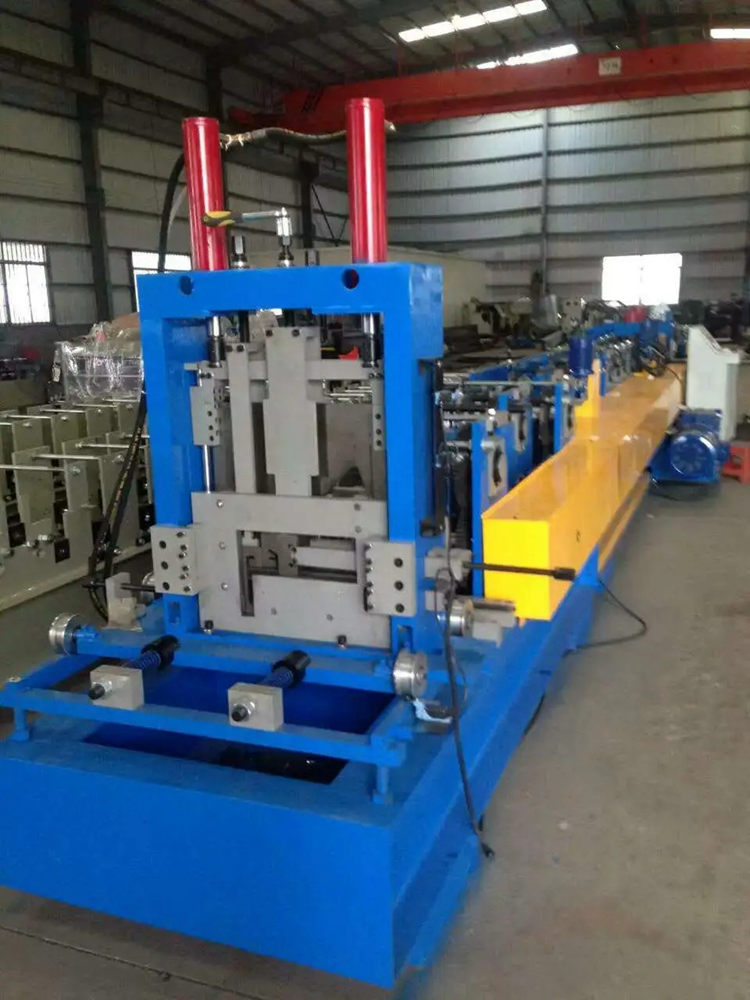
The Evolution and Significance of Stud Forming Machines
In the ever-evolving landscape of manufacturing and construction, the stud forming machine plays a pivotal role in streamlining processes and enhancing productivity. These machines have become indispensable tools in the production of metal studs and tracks, which are fundamental components in the construction of walls, ceilings, and various lightweight structures. This article delves into the intricacies of stud forming machines, their evolution, and their significance in modern manufacturing.
Understanding Stud Forming Machines
Stud forming machines are specialized equipment designed to produce metal studs quickly and accurately. These machines work by feeding a coil of metal, often steel or aluminum, through a series of rollers that progressively shape the material into the desired stud profile. The process includes cutting, bending, and forming operations that transform flat metal sheets into functional framing components ready for assembly.
Typically, these machines can produce various sizes and shapes of studs, making them highly versatile for different construction needs. As demand for lightweight and durable materials in the construction industry continues to rise, the stud forming machine has evolved to meet these requirements by incorporating advanced technology and automated features.
Evolution of Technology
From the early days of manual forming tools to the sophisticated CNC (Computer Numerical Control) machines of today, stud forming technology has come a long way. Initially, stud forming was a labor-intensive process, requiring skilled operators to manually shape and cut metal. However, with advances in technology, the emergence of automated machines has radically transformed the industry.
Modern stud forming machines are equipped with computer control systems that allow for precise measurements and adjustments, leading to increased accuracy and reduced waste. These machines can be programmed to produce large quantities of studs in a short time, enabling manufacturers to meet high demand while maintaining quality standards. Furthermore, many contemporary machines offer features such as quick setup times and minimal downtime, optimizing the manufacturing process.

The Importance in Construction
The significance of stud forming machines in the construction industry cannot be overstated. As the demand for quicker and more efficient building practices grows, these machines offer solutions that enhance productivity. Metal studs produced by these machines are lightweight yet strong, making them ideal for modern construction methods like drywall installation and modular building.
Moreover, the use of metal studs instead of traditional wooden studs addresses several key issues in construction. Metal studs are impervious to termites, fire-resistant, and do not warp or shrink. This durability leads to lower maintenance costs and a longer lifespan for structures built with them. Additionally, the consistent quality achieved through automated fabrication reduces the likelihood of structural faults.
Environmental Considerations
As sustainability becomes a cornerstone of modern manufacturing, stud forming machines are evolving to become more environmentally friendly. Many manufacturers are now focusing on using recycled materials for production and implementing energy-efficient processes. The ability to produce less waste and lower energy consumption enhances the ecological footprint of metal construction materials.
Furthermore, the lightweight nature of metal studs contributes to energy savings during transportation and installation. Construction projects that utilize stud forming machines often exhibit a lower overall carbon footprint, aligning with global efforts to promote sustainable building practices.
Conclusion
In conclusion, stud forming machines are integral to modern manufacturing and construction processes. Their evolution from manual tools to advanced computer-controlled systems has revolutionized the way metal studs are produced. With the growing emphasis on efficiency, quality, and sustainability in construction, these machines are not just a benefit but a necessity. As technology continues to advance, the potential of stud forming machines remains vast, promising even greater innovations that will further enhance the construction industry in the years to come. As we move toward a future where efficiency and sustainability take precedence, stud forming machines will undoubtedly play a crucial role in shaping the built environment.